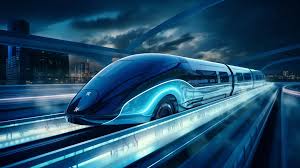Transportation is undergoing a transformative shift, with new models and technologies redefining how people and goods move. From the rise of electric and autonomous vehicles to the growing emphasis on sustainability, the mobility landscape is evolving rapidly. One key trend driving this change is Mobility as a Service (MaaS), which integrates various transportation modes into a seamless digital platform. As urbanization accelerates and consumer expectations change, the future of mobility promises efficiency, convenience, and sustainability.
The Role of Mobility as a Service (MaaS)
Mobility as a Service (MaaS) is revolutionizing urban transportation by offering an integrated, user-friendly experience that combines multiple modes of transport. Instead of relying solely on personal vehicles, users can access a mix of public transit, ride-sharing, bike rentals, and car-sharing services through a single app. This approach not only enhances convenience but also reduces congestion and environmental impact.
Cities worldwide are adopting MaaS solutions to create smarter, more connected transportation networks. By leveraging real-time data and AI-driven algorithms, these platforms offer optimized routes and personalized travel recommendations. As more people shift towards MaaS, the reliance on privately owned vehicles may decline, paving the way for more sustainable urban mobility.
Autonomous Vehicles: The Future of Smart Transportation
Autonomous vehicles (AVs) represent one of the most groundbreaking advancements in mobility. These self-driving cars use AI, sensors, and machine learning to navigate roads with minimal human intervention. Companies like Tesla, Waymo, and traditional automakers are investing heavily in AV technology, aiming to improve safety and efficiency.
By reducing human errors, which cause the majority of traffic accidents, AVs have the potential to make roads safer. Additionally, they can enhance mobility for people with disabilities and the elderly, providing greater independence. While regulatory and technological challenges remain, the widespread adoption of autonomous vehicles could redefine urban transportation in the coming decades.
Electrification and the Push for Sustainable Transport
Electric vehicles (EVs) are at the forefront of the global push for sustainable mobility. As concerns over climate change and air pollution grow, governments and businesses are prioritizing the transition from gasoline-powered cars to electric alternatives. Tesla, Rivian, and traditional automakers are expanding their EV lineups, making these vehicles more accessible to consumers.
Charging infrastructure is a key factor in accelerating EV adoption. Public and private sector collaborations are increasing the availability of fast-charging stations, reducing range anxiety among potential buyers. Additionally, advancements in battery technology are improving EV performance, making them a viable alternative to traditional combustion-engine cars.
Hyperloop and High-Speed Rail: Redefining Long-Distance Travel

High-speed transportation technologies, such as the Hyperloop and advanced rail systems, are gaining traction as viable solutions for long-distance travel. The Hyperloop, a concept popularized by Elon Musk, envisions passenger pods traveling through vacuum tubes at speeds exceeding 600 mph. If realized, this innovation could significantly reduce travel times and revolutionize intercity transportation.
Similarly, high-speed rail networks in countries like Japan and China demonstrate the potential for fast, efficient, and eco-friendly travel. With increasing investments in railway infrastructure, more regions are likely to adopt high-speed rail as an alternative to air travel, reducing both congestion and carbon emissions.
Urban Air Mobility: The Rise of Flying Vehicles
Urban air mobility (UAM) is no longer confined to science fiction. Companies like Joby Aviation, Airbus, and Volocopter are developing electric vertical takeoff and landing (eVTOL) aircraft designed for short-distance urban travel. These aerial vehicles could alleviate congestion in crowded cities and provide rapid transportation for commuters.
Regulatory approvals and infrastructure development, such as vertiports, will be crucial in integrating UAM into existing transportation networks. While commercial adoption may take time, the potential benefits of air mobility make it an exciting prospect for the future.
Smart Cities and IoT: Enhancing Mobility Infrastructure
The future of mobility extends beyond vehicles—it involves creating smarter cities with interconnected infrastructure. The Internet of Things (IoT) plays a crucial role in this transformation, enabling real-time traffic monitoring, adaptive traffic signals, and efficient parking solutions.
Smart city initiatives are being implemented globally, integrating data analytics and AI to optimize traffic flow and reduce congestion. By combining MaaS with IoT-driven infrastructure, urban mobility can become more efficient, sustainable, and accessible to all.
Conclusion: A Future of Seamless, Sustainable Mobility
The future of mobility is marked by technological innovation and a shift toward sustainable transportation models. Mobility as a Service (MaaS), autonomous vehicles, electric mobility, high-speed transport, and urban air mobility are shaping a future where transportation is more efficient, eco-friendly, and accessible.
As governments, businesses, and technology providers collaborate, the transportation landscape will continue evolving. Investing in these advancements not only benefits consumers but also contributes to a cleaner, smarter, and more connected world. The journey toward the future of mobility is just beginning, and its impact will be felt across industries and societies worldwide.


